Kayak Model Item Number: E1666-0 from the National Museum of Natural History

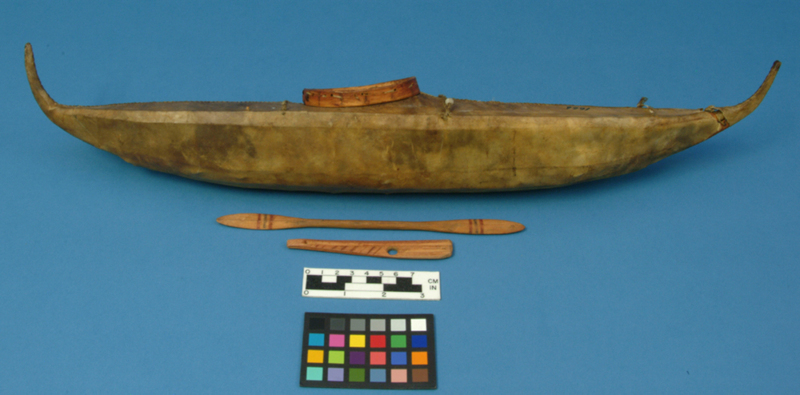
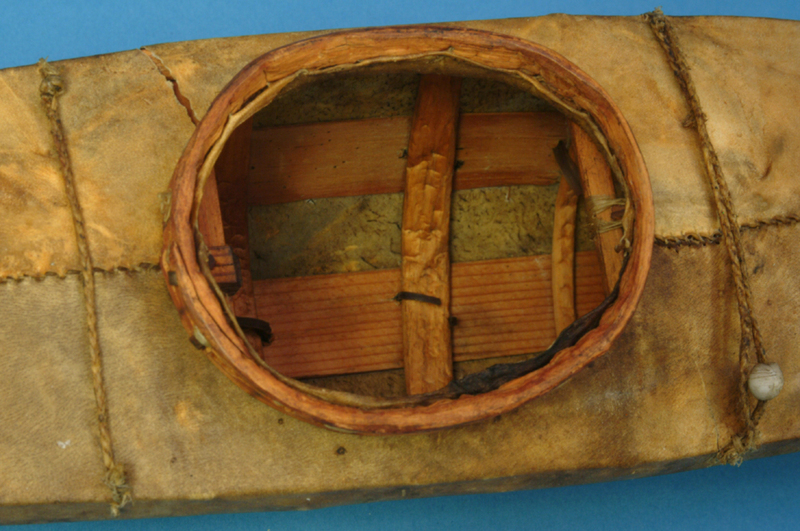
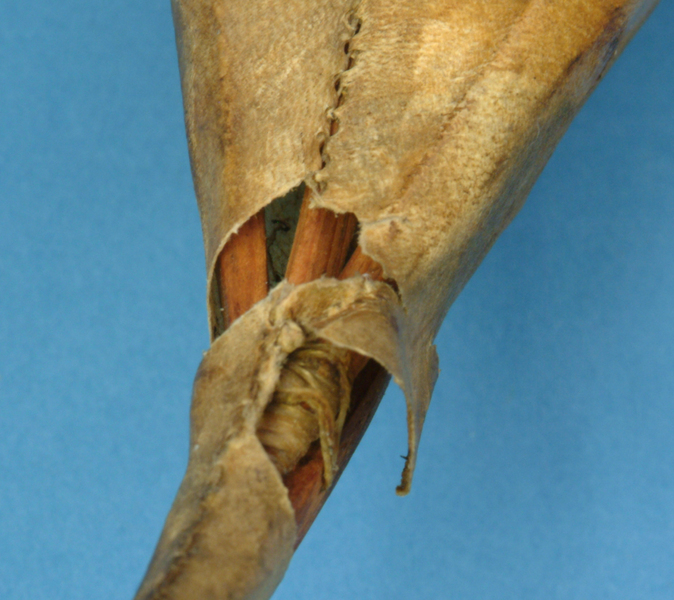

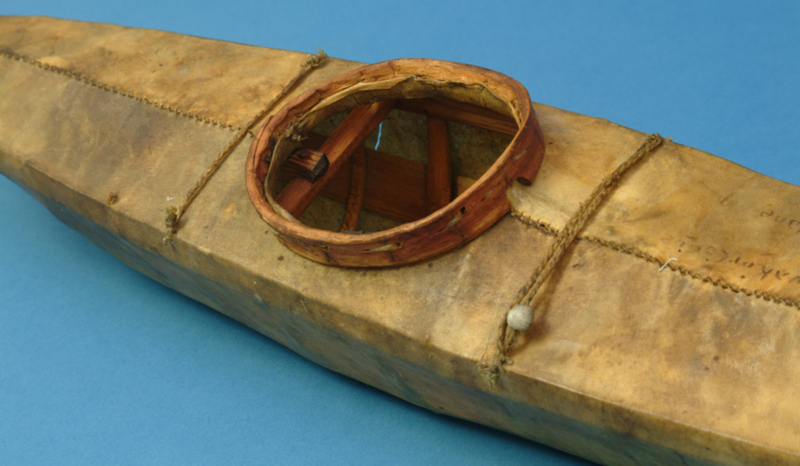
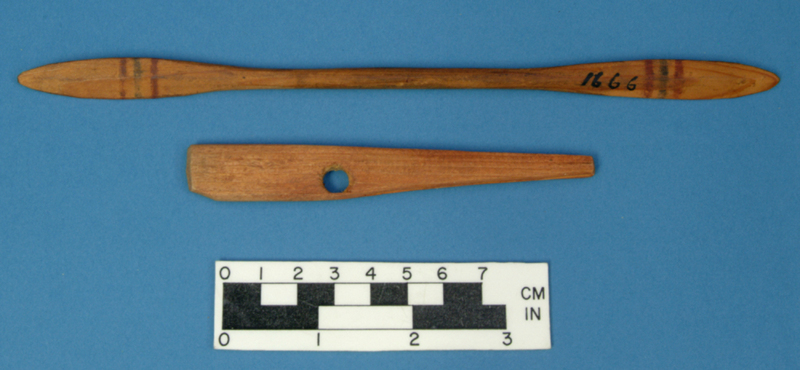



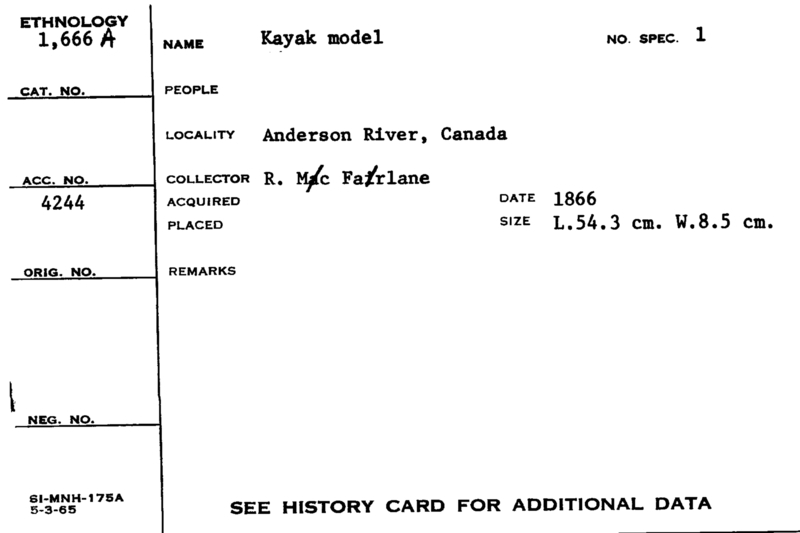


Notes
FROM CARD: "FRAME OF WOODEN STRIPS. COVERED WITH SKIN; MANHOLE IN THE CENTER; BOW AND STERN BEAKED; PADDLE ACCOMPANYING. LENGTH, 20 INCHES. SENT AS A GIFT TO MUSEUM OF NATURAL HISTORY, BATTLE CREEK PUBLIC SCHOOLS. BATTLE CREEK, MICH., OCT.7,. 1924. 1666: INVENTORY RECORDS NOTE OBJECT STILL HERE. BATTLE CREEK OBJECT #1666 IS SMALL POT. SI #1666 SHOULD BE CHECKED FOR INCORRECT NO. (SEE ACC. #9899.)."Source of the information below: Inuvialuit Pitqusiit Inuuniarutait: Inuvialuit Living History, The MacFarlane Collection website, by the Inuvialuit Cultural Resource Centre (ICRC), Inuvik, N.W.T., Canada (website credits here http://www.inuvialuitlivinghistory.ca/posts/12 ), entry on this artifact http://www.inuvialuitlivinghistory.ca/items/53 , retrieved 12-19-2019: Model of a kayak with prominent upturned ends that are distinctive of Inuvialuit kayaks. The frame is made from wood, and the cover is made from several pieces of hide stretched over the frame and stitched together. Deck lashings made from braided sinew for holding hunting implements are attached fore and aft of the cockpit, and a lance holder made from bone or antler is attached near the front end. The lashing in front of the cockpit has a bead attached to it, possibly representing a rest for a lance or harpoon used in conjunction with the holder. The model includes a two-bladed paddle and a throwing board, both of which are made of wood. The paddle is decorated with red and black lines made using ochre and charcoal encircling the blades. The throwing board has ochre lines on its upper surface. More information here: http://www.inuvialuitlivinghistory.ca/item_types/32: Inuvialuit used lightweight kayaks for hunting whales and seals, setting and hauling fishnets, and spearing swimming caribou. The frames were made from driftwood, and skins of seals or beluga whales were used for covers. Inuvialuit kayaks had distinctive upturned stems that were useful for lifting them from the water. Full-sized kayaks would have been difficult to send to the Smithsonian Institution, and MacFarlane instead collected accurately made models.
Item History
- Made in Northwest Territories, Canada
- Collected in Northwest Territories, Canada
- Received from Roderick R. MacFarlane on December 21, 1866
What
- Name
- Kayak Model
- Identification Number
- E1666-0
- Type of Item
- kayak model, paddle model and atlatl model
Who
- Culture
- Eskimo, Inuit and Inuvialuk
- Received from
- Roderick R. MacFarlane
Where
- Holding Institution
- National Museum of Natural History
- Made in
- Northwest Territories, Canada
- Collected in
- Northwest Territories, Canada
When
- Acquisition Date
- on December 21, 1866
Other
- Accession Number
- 66A00090